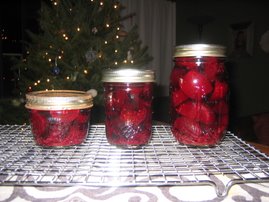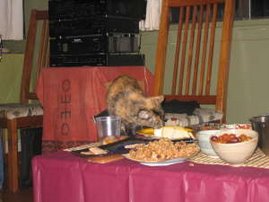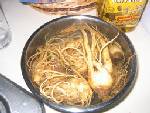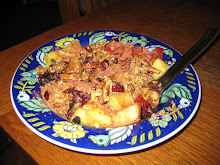 A friend in London brought a lovely semolina pudding-type dish to the bar mitzvah a few weeks ago. He's the only one who brought homemade food, so of course I was charmed. But it was also super delicious. He hasn't yet shared the recipe with me, but I found this one online, and made it soon after my return. His dish was Turkish, but semolina-type desserts are common in many areas of the world. Apparently, its a favorite among Hare Krishnas. That's cool.
A friend in London brought a lovely semolina pudding-type dish to the bar mitzvah a few weeks ago. He's the only one who brought homemade food, so of course I was charmed. But it was also super delicious. He hasn't yet shared the recipe with me, but I found this one online, and made it soon after my return. His dish was Turkish, but semolina-type desserts are common in many areas of the world. Apparently, its a favorite among Hare Krishnas. That's cool.Suji Halva
2 3/4 cups water
1 1/4 cups sugar
1/2 teaspoon saffron strands, soaked in 1 tablespoon boiling hot milk
140 g unsalted butter
1 1/4 cups semolina
1/3 cup sliced almonds
1 teaspoon ground cardamom
1/3 cup currants
Combine the water, sugar and the soaked saffron in a saucepan. Place over moderate heat, stirring to dissolve the sugar. Bring to a boil, then reduce the heat to very low and cover with a tight-fitting lid. Melt the butter in another saucepan over low heat, stirring occasionally. Add the semolina, and slowly and rhythmically. Stir-fry the grains for about 20 minutes, or until they darken to a tan colour and become aromatic. Add the flaked almonds to the grains towards the end of the toasting process. Raise the heat under the syrup, add the cardamom and the raisins and bring it to a rolling boil. Raise the heat under the semolina for 1 minute, stirring continuously. Remove the saucepan of semolina from the heat, and slowly pour the hot syrup into the semolina, stirring steadily. The grains may at first splutter, but will quickly cease as the liquid is absorbed.
Return the halava to the stove and stir steadily over very low heat until the grains fully absorb the liquid, start to form into a pudding-like consistency, and pull away from the sides of the pan. Place a tight-fitting lid on the saucepan and cook over the lowest possible heat for 5 minutes. Removed the covered saucepan from the heat and allow the halava to steam for an additional 5 minutes. Serve hot.
I served ours with a bowl of labne, which complemented the custard well.

















No comments:
Post a Comment